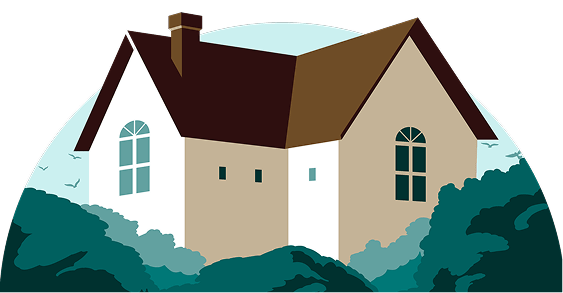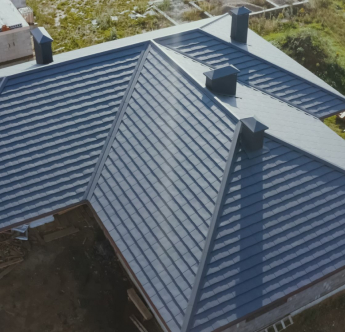24-Hour Roofing Services for Wind, Hail & Storm Damage
No homeowner ever wants to experience a roofing emergency, but sometimes Mother Nature has other plans. If you find yourself in an unforeseen circumstance, it’s important to quickly request emergency roof repair in Connecticut in order to prevent damage to the inside of your home.
At JP Carroll Roofing, our roofers are always ready to go at a moment’s notice with the equipment and expertise needed to quickly and effectively repair all types of roof leaks and roofing damage. As one of Connecticut’s leading roofing companies, our roofing crews are well versed in all types of roofing materials and can solve any problem you may have.
Call (860) 215-2644 or contact us online to schedule top-notch emergency roof repair in Connecticut or surrounding areas today!
Preventative Maintenance for Roofing Emergencies
While we offer 24-hour emergency roof repair services, it’s important to consider preventative maintenance to avoid roofing emergencies in the first place. Regular inspections and maintenance can help identify and address potential issues before they escalate into a full-blown emergency.
Our team at JP Carroll Roofing can provide routine maintenance services such as:
- Inspecting for loose, damaged, or missing shingles
- Cleaning and clearing debris from gutters and downspouts
- Checking for signs of water damage or leaks
- Assessing the condition of flashing and sealant
- Identifying potential areas of weakness or vulnerability
By investing in preventative maintenance, you can prolong the lifespan of your roof, prevent costly emergency repairs, and ensure the safety and integrity of your home. Contact us today to schedule a roof inspection and maintenance service.
Request your free estimate!
Frequently Asked Questions
What Are the Most Common Causes of Roofing Emergencies?
The most common signs you have a roofing emergency on your hands includes:
- Delayed maintenance and natural wear due to weather and UV radiation
- Fallen tree limbs
- Shingles or roof decking torn off by high winds
- Ice dams or ice buildup in valleys
- Improper installation
- Flashing failures at roof penetrations
Some roofing emergencies in Connecticut are preventable, but others are simple out of the homeowner’s control. You should always take care to have proper roof maintenance and practice preventative strategies like snow removal to prevent ice damming.
Signs You Have a Roofing Emergency
At JP Carroll Roofing, we understand that the safety and well-being of your home and family are paramount. Recognizing the signs of a roofing emergency is crucial to protecting your investment and avoiding potentially costly repairs down the road.
Here are the telltale signs that you may have a roofing emergency on your hands:
Sudden and Severe Leaks
If you notice water infiltrating your home during heavy rain or even mild precipitation, it’s a clear indication of a roofing problem. Sudden and severe leaks are emergencies that demand immediate attention, as they can lead to extensive interior damage, compromised structural integrity, and mold growth.
Visible Roof Damage
Obvious signs of roof damage, such as missing or damaged shingles, cracked tiles, or exposed underlayment, should not be ignored. These vulnerabilities can allow water to penetrate your roof’s protective barrier, leading to leaks and, in severe cases, structural damage.
Interior Water Stains and Ceiling Damage
Water stains or bulging, discolored areas on your ceilings or walls are red flags of roof leaks. These stains can indicate not only the presence of a leak but also potential structural damage and the risk of a ceiling collapse. Address these issues urgently to prevent further deterioration.
Increased Indoor Humidity
Excess indoor humidity, especially during dry weather, can be a sign of a hidden roof leak. If you notice a sudden increase in humidity levels, it’s essential to investigate further, as this could lead to mold growth and compromised indoor air quality.
Mold and Mildew Growth
The presence of mold or mildew inside your home, particularly in areas near the roof, is a strong indicator of a roofing problem. Mold can pose health risks and should be addressed promptly to prevent it from spreading.
Rising Energy Bills
If your energy bills have seen an unexplained increase, your roof may be compromised. A damaged roof can allow conditioned air to escape, forcing your HVAC system to work harder and consume more energy.
Storm or Tree Damage
Severe weather, including hail, strong winds, or fallen trees, can cause immediate and visible damage to your roof. If your home has been subjected to such conditions, it’s crucial to have your roof inspected promptly, even if there are no apparent leaks.
Age of the Roof
An aging roof is more susceptible to damage and may require regular inspections to catch potential issues before they become emergencies. If your roof is nearing the end of its expected lifespan, proactive measures are essential to prevent costly emergencies.
Granule Loss from Shingles
If you find granules from your shingles in your gutters or on the ground, it’s a sign that your roof is deteriorating. Granule loss can compromise your roof’s ability to protect against water and UV damage.
Interior or Exterior Cracks in Masonry or Walls
Cracks in your home’s masonry or exterior walls could be due to roof-related issues. A compromised roof can allow water to infiltrate and damage your home’s structural components.
If you notice any of these signs or suspect a roofing emergency, don’t hesitate to contact JP Carroll Roofing. Our team of experts is here to provide immediate assistance, assess the situation, and take the necessary steps to safeguard your home. Your safety and peace of mind are our top priorities.
Can I go up on the roof myself during a roofing emergency?
No, a damaged roof is a dangerous environment. It’s important to always let a professional check it out first.
What should I do to protect the interior of my home during a roofing emergency?
You should cover the interior using plastic sheeting to protect it and help prevent leaks.
How can I visually inspect my roof for damage during a roofing emergency?
From the ground, you can take a visual inspection of your roof and note any debris and possible damage.
What are some signs of a roofing emergency that I should be aware of?
Signs of a roofing emergency include sudden and severe leaks, visible roof damage, interior water stains, increased indoor humidity, mold and mildew growth, rising energy bills, storm or tree damage, age of the roof, granule loss from shingles, and interior or exterior cracks in masonry or walls.
What are the most common causes of roofing emergencies?
The most common causes of roofing emergencies include delayed maintenance and natural wear due to weather and UV radiation, fallen tree limbs, shingles or roof decking torn off by high winds, ice dams or ice buildup in valleys, improper installation, and flashing failures at roof penetrations.
Things to Consider During a Roofing Emergency
In case of a roofing emergency, make sure to remember these three points:
- Don’t go up on the roof yourself – A damaged roof is a dangerous environment. Always let a professional check it out first.
- Cover the interior – Using plastic sheeting will protect the interior of your home and help prevent leaks.
- Inspect the roof visually – From the ground, take a visual inspection of your roof and note debris and possible damage.
As an experienced roofing contractor in Connecticut, we can handle any emergency roof repair need you may have. If your home has leaks, wind damage, or a collapsing roof, make us your first call to get fast and effective repairs.
Get your free estimate on emergency roof repair in Connecticut, Hartford, or the surrounding areas by calling (860) 215-2644 or contacting us online today!



